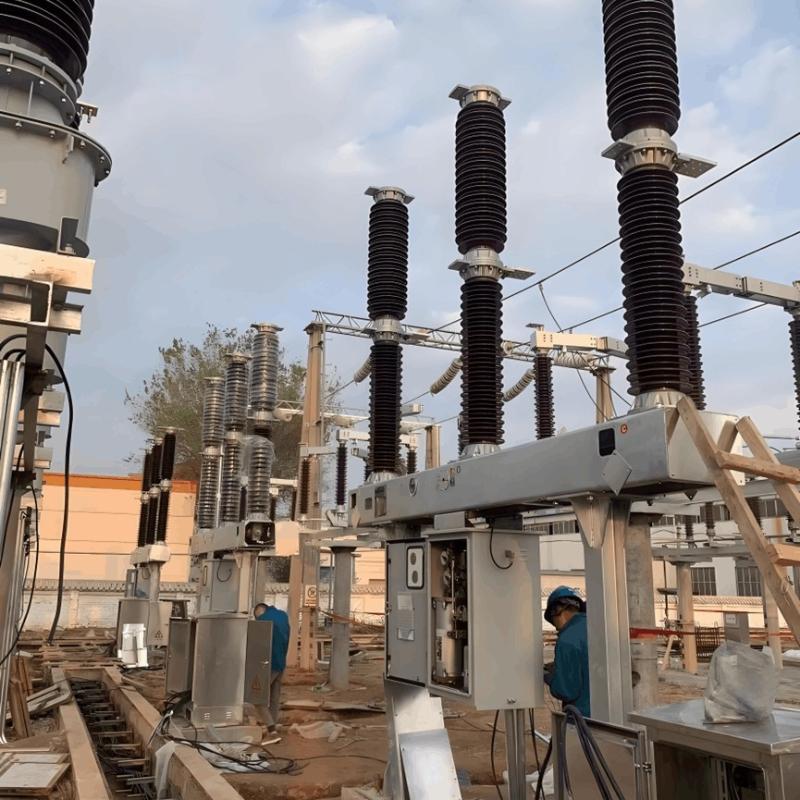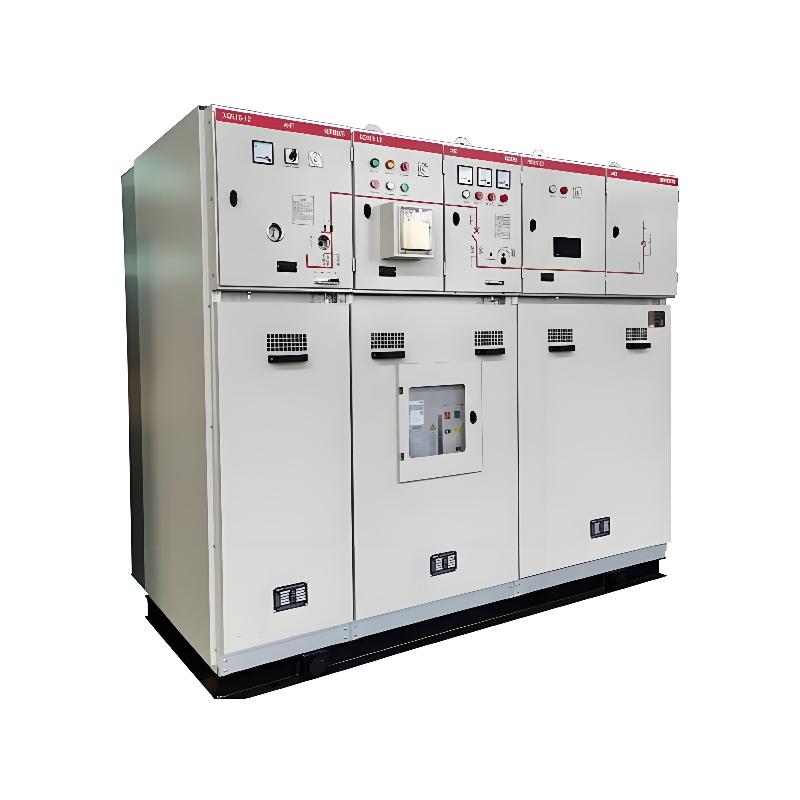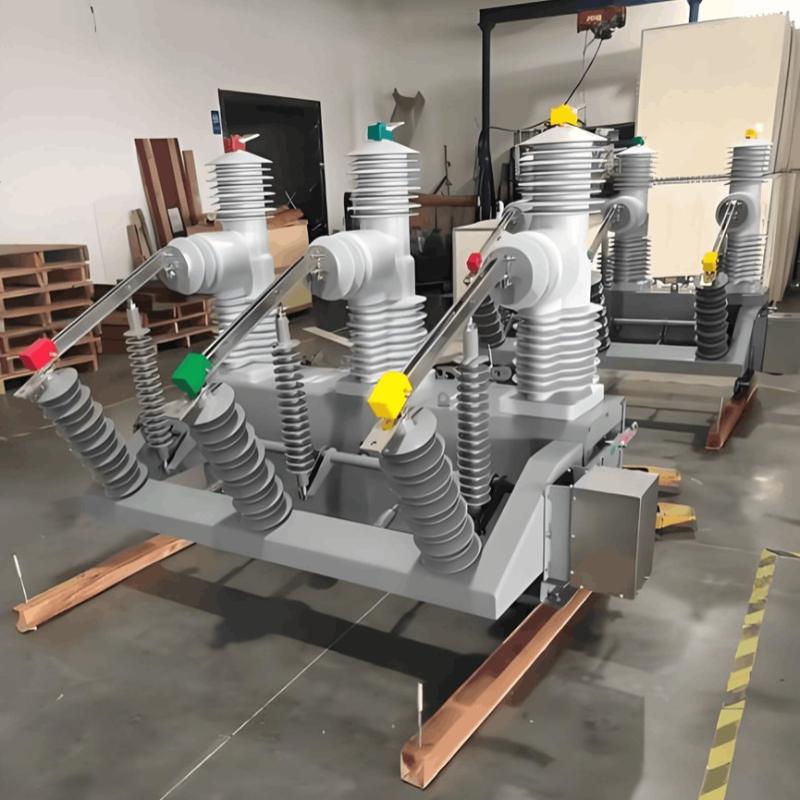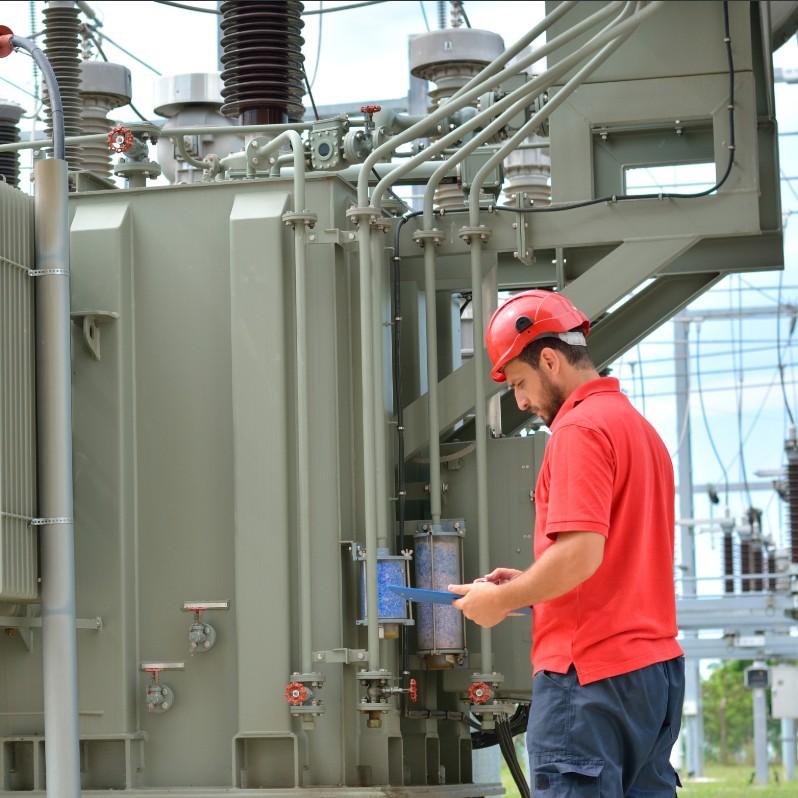1. Gas System Faults
The most critical type of fault in environmentally friendly gas-insulated ring main units is related to the gas system, primarily involving gas leakage and pressure anomalies. Gas leakage in nitrogen-insulated ring main units mainly stems from seal material aging and welding process defects. Statistics indicate that approximately 65% of gas leakage faults are related to O-ring aging, while 30% are caused by inadequate welding. Gas leakage not only affects insulation performance but can also lead to safety issues under extreme conditions. When nitrogen concentration increases, causing oxygen levels in the environment to drop below 19.5%, asphyxiation may occur, posing a threat to personnel safety.
Pressure anomalies represent another common fault, primarily caused by solenoid valve regulation failures or seal failures. The operating pressure of nitrogen-insulated ring main units is typically maintained between 0.12 and 0.13 MPa, with the rated absolute pressure not exceeding 0.2 MPa. When pressure drops below 90% of the rated value (approximately 0.11 MPa), the system's insulation performance significantly decreases, necessitating immediate refilling or maintenance. Under high-voltage impulse conditions, nitrogen's dielectric strength exhibits a "hump phenomenon," where the relationship between pressure and insulation strength is linear only in uniform or slightly non-uniform electric fields, making pressure control more complex.
To address gas system faults, modern eco-friendly ring main units are generally equipped with advanced gas monitoring systems, including pressure sensors, gas leak detectors, and humidity monitoring modules. For example, wireless sensing technology enables multi-dimensional real-time monitoring of temperature, pressure, leakage, and moisture content within the gas chamber, significantly enhancing fault warning capabilities. Practical applications show that installing such monitoring systems can reduce gas leakage fault rates by over 75% and extend equipment maintenance cycles to 3–5 years.
2. Electric Field-Related Faults
Partial discharge and breakdown caused by uneven electric field distribution are the second major category of faults in environmentally friendly gas-insulated ring main units. This is primarily due to the fact that nitrogen's insulation strength is only about one-third that of SF₆ gas. In non-uniform electric fields, nitrogen's insulation performance significantly deteriorates, making it prone to discharge phenomena.
Specific manifestations of electric field-related faults include discharges at bushing connection screws, electric field distortion around flanges, and surface flashovers on insulators. Research indicates that the maximum electric field intensity at these fault points can reach 5.4 kV/mm, far exceeding safety thresholds. For instance, installing shielding covers on bolt heads can reduce the electric field intensity to 2.3 kV/mm, significantly lowering the risk of discharge.
The causes of electric field faults mainly include three factors: first, the low insulation strength of nitrogen (about one-third that of SF₆), requiring more precise electric field design; second, the complex internal structure of the gas chamber, which easily forms electric field concentration points; and third, the compact design of eco-friendly ring main units, which typically have smaller phase-to-phase distances than traditional equipment, exacerbating electric field non-uniformity. In eco-friendly ring main units, the air distance between conductors and phases or ground is usually no more than 125 mm, much smaller than the over 350 mm in SF₆-insulated units, making electric field control particularly important.
Addressing electric field issues requires design optimization. Adopting equipotential insulation sleeves and optimizing bushing shapes and flange designs through electric field simulation can reduce the risk of partial discharge. Additionally, increasing electrode fillet radii (R angles) and using round busbars to lower the electric field non-uniformity coefficient are also effective methods. During manufacturing, it is essential to ensure that the surface electric field strength of live parts and insulators meets standard requirements, especially the partial discharge control of epoxy resin components.
3. Faults Caused by Heat Dissipation Issues
The third major type of fault faced by environmentally friendly gas-insulated ring main units is overheating due to insufficient heat dissipation. Nitrogen's heat dissipation performance is significantly weaker than that of SF₆ gas, a characteristic particularly prominent under high-load operating conditions. When current exceeds 2100 A, the heat dissipation capacity of nitrogen-insulated ring main units becomes inadequate, easily leading to insulation material aging and connection failures.
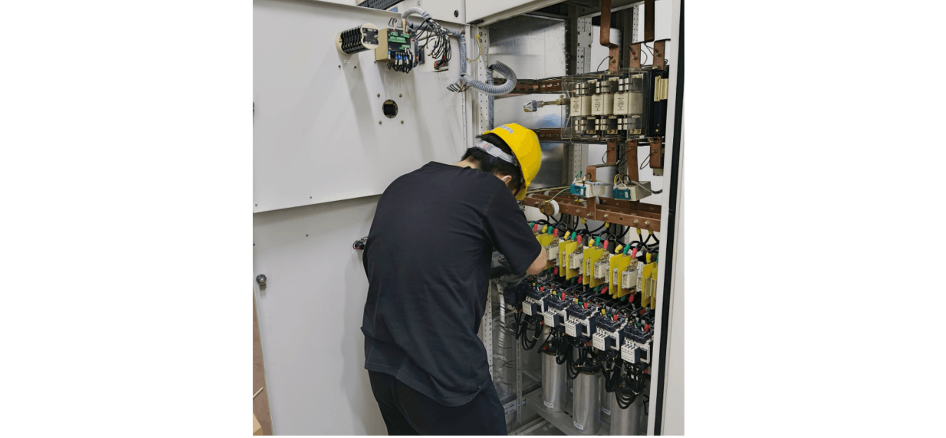
Specific manifestations of insufficient heat dissipation include overheating of cable joints, temperature rise at busbar connections, and carbonization of insulation materials. For example, a severe accident involving the burning of a cable joint was analyzed and found to be caused by a combination of poor installation practices and inadequate heat dissipation. In long-term operation, overheating leads to a decline in insulation material performance, creating a vicious cycle that ultimately results in short circuits or explosions.
The causes of heat dissipation issues mainly include three aspects: first, nitrogen's thermal conductivity is only one-quarter that of SF₆, resulting in poor thermal conductivity; second, the compact design of eco-friendly ring main units limits the gas chamber space, restricting natural convection cooling; and third, heat generated during high-load operation is difficult to effectively dissipate, leading to localized temperature increases.
In recent years, various innovative solutions have emerged to address heat dissipation issues. Radiative cooling coatings can reduce the surface temperature of ring main units by 30.9°C during the day, offering good mechanical properties, aging resistance, and corrosion resistance. Developed intelligent cooling and dehumidification devices, through the coordinated operation of fans and dehumidifiers, can reduce ring main unit temperatures by 40% and humidity by 58%, effectively solving insufficient heat dissipation problems. Additionally, optimizing gas chamber ventilation design and using high-thermal-conductivity insulation materials are common improvement methods.
4. Mechanical Component Faults
The fourth common fault in environmentally friendly gas-insulated ring main units is mechanical component failure, primarily including operating mechanism jamming, transmission part wear, and seal component aging. Although the gas chamber's sealed design reduces the impact of humid environments on mechanical components, long-term sealing may also lead to internal moisture accumulation, affecting the reliability of the operating mechanism.
Specific manifestations of mechanical faults include failure to open or close, spring jamming, and wear of transmission shaft pins. For example, multiple cases of operating mechanism jamming due to mechanical component aging have been recorded, typically related to long periods of inactivity or insufficient maintenance. In eco-friendly equipment, mechanical faults may also be related to the compact internal space of the gas chamber and complex component layout.
The causes of mechanical faults mainly include: first, long-term sealing may affect the lubrication state of the operating mechanism; second, compact design increases the installation difficulty and maintenance complexity of mechanical components; and third, eco-friendly equipment has higher requirements for mechanical strength to withstand gas chamber deformation risks.
Optimizing lubrication strategies is key to addressing mechanical component faults. It is recommended to use polyurea-based greases (such as Kl grease), which offer excellent high and low-temperature adaptability (-40°C to +120°C), arc resistance, and long service life (over 10 years). Additionally, regular maintenance (e.g., grease replacement every 3 years) and avoiding incompatible lubricants (such as calcium-based or sodium-based greases) are also important measures to prevent mechanical faults.











